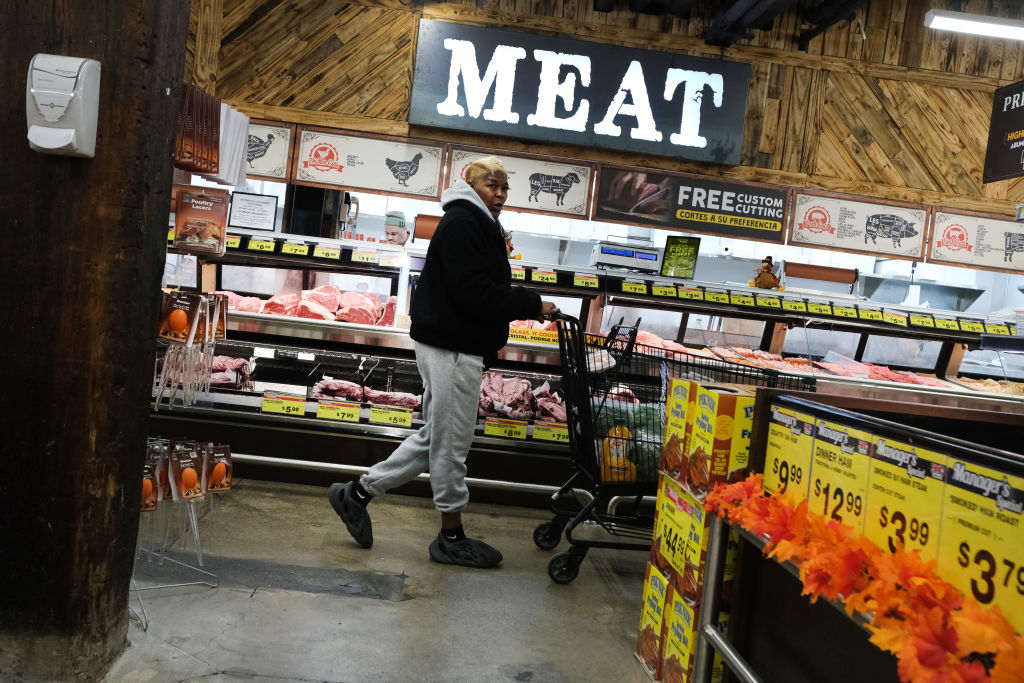US food inflation is getting so out of hand that dollar stores are pulling eggs from their shelves because they are too expensive. Whether eating at home or patronizing a restaurant, the cost of meat, fruit, vegetables, and coffee (the lifeblood of Western civilization) remains sticky, stubborn, and sad for the average American. But while there are signs that the overall food category in the consumer price index (CPI) is easing, the price tags at supermarkets and diners are elevated. So, is it time to begin adding spam cans and government tap water into family diets? This may be the only way to survive in an inflationary economic landscape.
USDA Expects Stubborn Food Inflation
The US Department of Agriculture’s (USDA) Economic Research Service (ERS) released the latest Food Price Outlook, with researchers anticipating that grocery store prices will remain high. Even on the lower end of the USDA’s projections, food-at-home prices are expected to be higher in 2023 than in the previous year, with the midpoint figure being 7.8%. By comparison, this category came in at 10.2% year-over-year in February, according to the Bureau of Labor Statistics (BLS). The USDA’s estimate would also be higher than the 20-year historical average of 2.5%.
Within this CPI category, the most notable component is eggs. The US government believes that egg prices will persist in surging between 13.4% and 48.9% this year. The classic breakfast staple has spiraled out of control in recent months, driven by a horrific avian flu season that has decimated supplies and rising input costs (labor, feed, and utilities).
Costs for food away from home are predicted to stay high this year in the range of 7.2% and 9.3% inflation, which would also be considerably larger than the two-decade historical average of 3.1%.
Overall, this is what the USDA thinks food inflation will look like this year:
- Beef and Veal: -7.5% to +6.2%
- Pork: -6.6% to +5.6%
- Other Meats: +0.8% to +8.2%
- Poultry: +0.2% to +6.6%
- Fish and Seafood: -0.3% to +5.9%
- Dairy Products: 1.7% to +11.4%
- Fruits and Vegetables: -0.9% to +6.4%
So, what will be driving US food inflation in 2023? A wide range of issues, from energy costs to a tight labor market to global supply chain disruptions. This is terrible news for typical US households.
Food Insecurity in America?

(Photo by Spencer Platt/Getty Images)
The United States is the wealthiest nation in the world. This has fostered an environment in which any consumer has access to an abundance of cheap food. Well, this may have been true before the coronavirus pandemic, but the COVID-19 public health crisis – and the global response – ostensibly altered everything, even a loaf of bread.
A new study by the Urban Institute found that nearly one-quarter of US adults are food insecure, up 5% from a year ago. Food insecurity – defined as when individuals cannot secure enough food for a nutritious and well-balanced diet – has been caused by rampant inflation and the end of pandemic-era benefits, the report noted. In addition, 62% of adults who reported higher grocery costs said they are lowering the number of food purchases or not buying the food they want. Moreover, 43% withdrew money from their savings, and 36% increased their credit card debt to pay for groceries.
This comes soon after a recent Coresight Research report discovered that a fifth of Americans are turning to dollar stores to shop for groceries. Many of these discount chains, such as Dollar Tree and Family Dollar, have been adapting to these consumer changes by adding more refrigeration units to their stores or remodeling their locations to offer a suite of foods to their customers.
There’s No Going Back
Will food inflation return to the days of 2%? Yes, most likely. The problem is that supermarket prices will not fall to pre-pandemic levels again. This is the chief issue of inflation: prices soar, purchasing power erodes, and more units of currency are required to acquire the same amount (or less) of food. But while the US government and the public showered in “free money” during the pandemic, the country is now paying dearly for the opulence and excess. From credit cards to buy-now-pay-later services, a significant portion of the country is struggling to put food on the table, and it is unclear if this will ever be resolved.
Do you have an opinion about this article? We’d love to hear it! If you send your comments to [email protected], we might even publish your edited remarks in our new feature, LN Readers Speak Out. Remember to include the title of the article along with your name, city, and state.
Please respect our republishing guidelines. Republication permission does not equal site endorsement. Click here.

